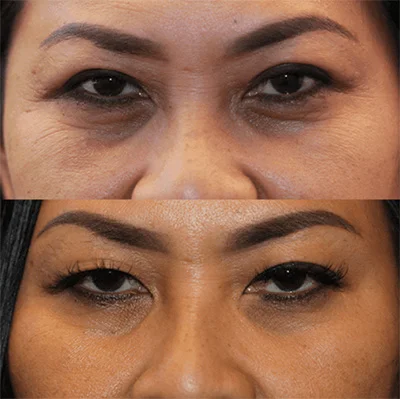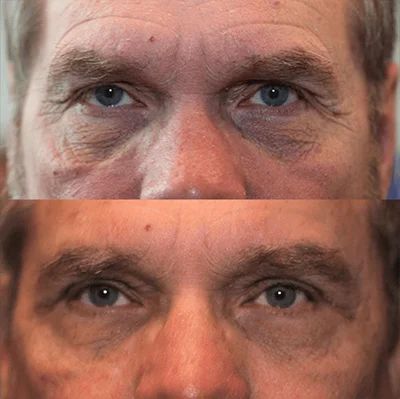
Plastic surgery used to be a “hush-hush” kind of affair, something you had done but didn’t want anyone to know. But times have changed, and now people from all walks of life opt for cosmetic and plastic surgery procedures to fix, augment, or diminish physical characteristics that make them uncomfortable and/or unhappy.
Unfortunately, as more information about conditions and procedures is uploaded to Dr. Google, many myths surrounding those conditions and procedures have popped up or been perpetuated, leaving you wondering what information is reliable.
Oculofacial plastic and cosmetic surgeon Dr. Dustin Heringer at Arizona Ocular & Facial Plastic Surgery understands his patients’ concerns about suspect information, which is why he makes every effort to educate and inform them about the choices available, the pros and cons, and what they can reasonably expect. Here, he puts forth a number of those pesky myths and debunks them for you.
Common myths about plastic surgery
Myths may have a kernel of truth buried in there somewhere; however, most are based on unreliable or outright incorrect information, so before you go ahead with a procedure, it’s important you learn the facts about it.
Myth #1: Plastic surgery is the same as cosmetic surgery
FACT: Cosmetic surgery is a form of plastic surgery, but it focuses entirely on aesthetics, whereas plastic surgery also includes reconstruction, such as cleft palate repair, breast reconstruction after a mastectomy, or limb repair from an animal bite.
You should also be aware that all plastic surgeons don’t have the same training. Many doctors are trained and board-certified in other specialties, such as gynecology or family medicine, and they’ve ventured into plastic surgery as an “add-on.” Their claims of being board-certified are correct, but it’s for another specialty, not plastic surgery.
Only the American Board of Plastic Surgery (ABPS) can certify that a doctor is fully trained in face and body plastic surgery. If you want to become certified, it takes 6-9 years to undergo all the necessary training, and then you must pass a rigorous written and two-day oral exam.
Myth #2: Only women get plastic surgery
FACT: While traditionally women have cornered the market on cosmetic surgery, according to the American Academy of Cosmetic Surgery’s (AACS) 2005 procedural survey, men are enthusiastically joining the ranks, with Botox®, hair transplantation/restoration, laser hair removal, microdermabrasion, and liposuction being the top five procedures, in that order. The AACS also reports that 12% of men surveyed said they plan to have cosmetic surgery at some point in the future.
Myth #3: Sagging breasts can be addressed with breast augmentation
FACT: Breast augmentation’s purpose is to increase a woman’s cup size, nothing more. If you’re suffering from sagging breasts (ptosis) as a result of age, pregnancy, breastfeeding, weight gain and loss, and decreased skin elasticity, you may benefit from a breast lift (mastopexy), where the breasts are recontoured to tighten skin and “perk” them up. If you want to increase or decrease your cup size simultaneously, you can do that, too.
Myth #4: Liposuction is good for weight loss
FACT: Yes, liposuction removes fat from the body, but it’s not designed as a whole-body procedure. Instead, it’s designed to remove fat from trouble spots, areas that resist loss from dieting and exercising. It’s incredibly site-specific. And for most healthy people, the procedure removes only 10-12 pounds max.
The good news about liposuction is that it permanently removes fat cells in the targeted area, meaning there’s nothing left to puff up and make you gain weight again. Your results are permanent as long as you continue to eat a healthy diet and exercise regularly.
Myth #5: Plastic surgery leaves no scars and lasts forever
FACT: Plastic surgeons are great at hiding the scars when they can and making visible scars look better and smaller, but all types of plastic surgery cause scar formation. If you’re concerned about how a scar will affect your look, the surgeon can recommend topical creams and ointments you can apply to further minimize the scar’s appearance.
Many plastic surgery procedures give you years, if not decades, with the look you want, but many factors determine how long the results last. And at some point, the aging process kicks in again, and your appearance changes. Ask your surgeon about great skin care, less-invasive office procedures, and surgical touch-ups to help maintain your new look.
Want to learn more about the facts of plastic surgery? Are you considering a procedure you want to explore? Arizona Ocular & Facial Plastic Surgery can help. To schedule a consultation with Dr. Heringer, call us at either of our locations or book online with us today.



